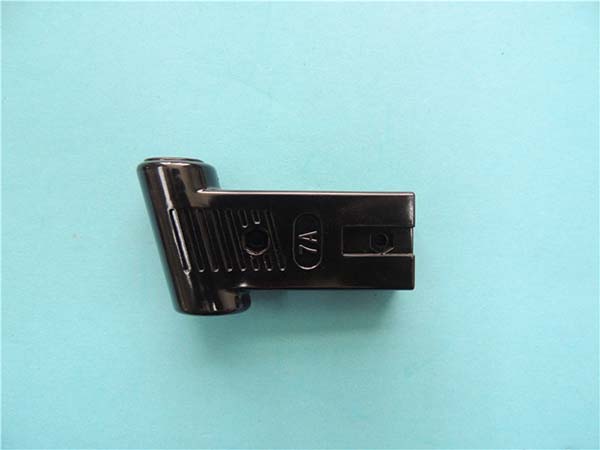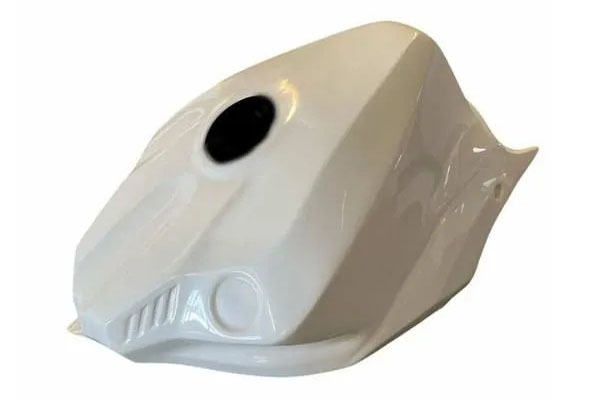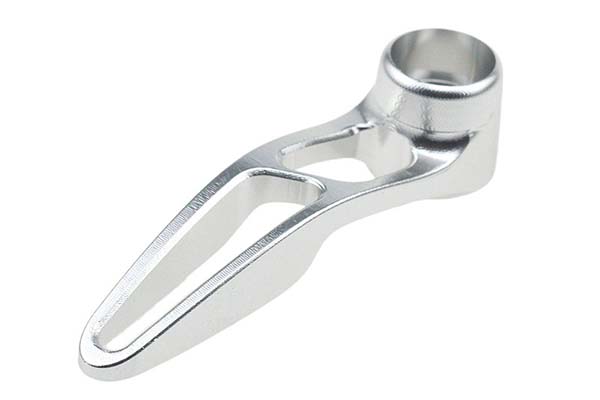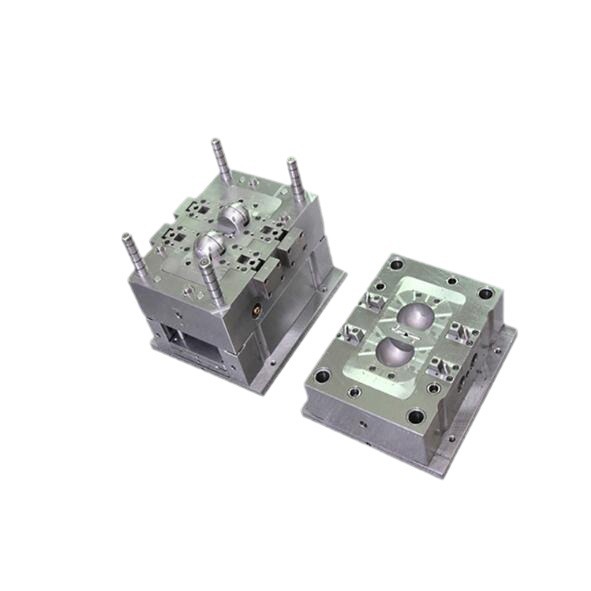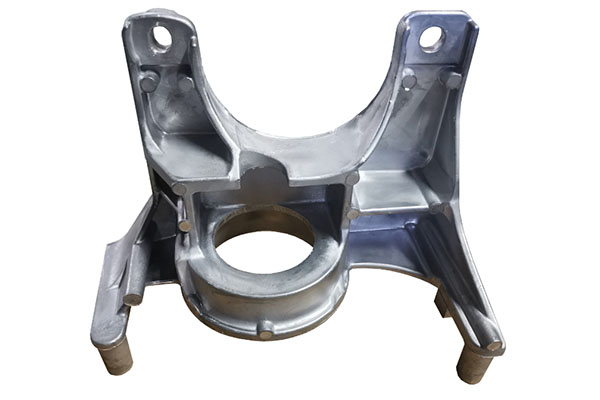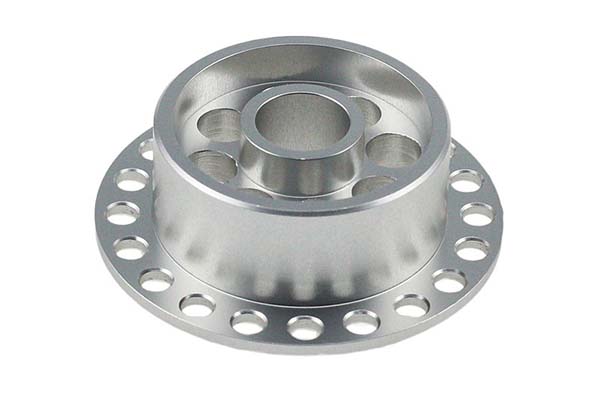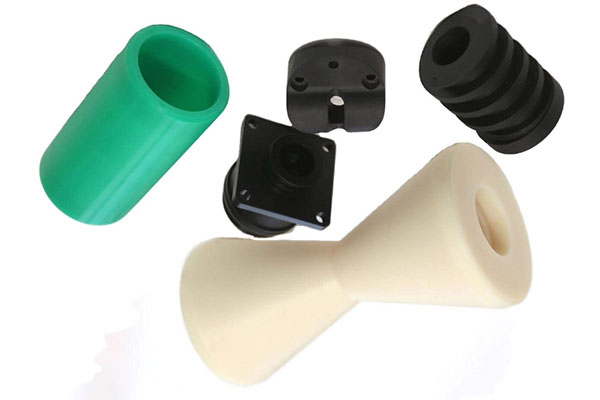CNC machining of PEEK GF30 (30% glass fiber reinforced PEEK) presents unique challenges that manufacturers often face. The addition of glass fibers enhances its mechanical strength and high rigidity but also makes it highly abrasive, leading to rapid tool wear without specialized tool selection. Additionally, the heterogeneous structure (polymer matrix with glass fibers) causes uneven cutting forces, increasing the risk of surface defects like fiber pull-out or matrix cracking. Achieving tight tolerance verification and consistent surface roughness is further complicated by PEEK GF30’s directional properties—fibers align during extrusion, creating variations in machinability across different axes. This guide addresses these pain points, offering expert strategies to master CNC machining of PEEK GF30.
CNC Machining Techniques for PEEK GF30
The CNC machining techniques for PEEK GF30 require specialized approaches to handle its abrasive and anisotropic nature:
- CNC milling: The primary operation, using ultra-hard tools and controlled cutting parameters to minimize wear. A spindle speed of 6000-10,000 RPM and feed rate of 0.05-0.1 mm/tooth balances material removal and tool life, while precision machining setups achieve tolerances as tight as ±0.015 mm.
- CNC turning: Suitable for cylindrical PEEK GF30 parts like shafts or bushings, with spindle speed of 2000-4000 RPM and feed rate of 0.08-0.15 mm/rev. Sharp tools with negative rake angles (-5° to -10°) reduce fiber pull-out, ensuring smooth surfaces.
- Drilling and threading: Requires carbide drills with a 140° point angle and parabolic flutes to evacuate glass fiber chips effectively. Threading uses forming taps (instead of cutting taps) to prevent fiber damage, with slow speeds (500-1000 RPM) ensuring thread integrity.
- Climb milling vs. conventional milling: Climb milling (cutting with the tool rotation) is preferred for PEEK GF30, as it reduces fiber pull-out by shearing fibers cleanly. Conventional milling (cutting against rotation) increases the risk of fiber detachment, leaving rough surfaces.
- Cutting parameters optimization: Lower feed rate (0.05-0.08 mm/tooth) and shallower depth of cut (0.3-1 mm) minimize tool engagement with glass fibers, reducing abrasion. Coolant (5-10% water-soluble emulsion) directed at the cutting zone dissipates heat and flushes away abrasive chips.
PEEK GF30 Material Properties
PEEK GF30 (30% glass fiber reinforced PEEK) combines the benefits of PEEK with enhanced properties from glass fibers, influencing every aspect of machining:
- Mechanical strength: Boasting a tensile strength of 170-190 MPa (nearly double that of unreinforced PEEK) and flexural modulus of 15-17 GPa, it offers exceptional load-bearing capacity—ideal for high-load applications.
- High rigidity and dimensional stability: Glass fibers reduce creep by 70% compared to unreinforced PEEK, ensuring parts maintain shape under prolonged stress, critical for aerospace and industrial machinery.
- Thermal stability: Retains properties at continuous use temperatures up to 260°C, with a thermal expansion rate 50% lower than standard PEEK (20-25 μm/m·K vs. 45-50 μm/m·K), minimizing post-machining dimensional changes.
- Chemical resistance: Maintains good resistance to oils, fuels, and most industrial solvents, though concentrated acids can degrade the polymer matrix over time.
- Wear resistance: The glass fiber reinforcement reduces friction and improves abrasion resistance by 40% compared to unreinforced PEEK, suitable for sliding components like bearings.
- Anisotropic properties: Fibers align along the extrusion direction, making machining easier parallel to the fiber axis but more challenging perpendicular to it—requiring adjusted parameters for each orientation.
| Property | PEEK GF30 | Unreinforced PEEK | PEEK CF30 (Carbon Fiber) |
| Tensile Strength | 170-190 MPa | 90-100 MPa | 180-200 MPa |
| Flexural Modulus | 15-17 GPa | 3.6 GPa | 18-20 GPa |
| Thermal Expansion Rate | 20-25 μm/m·K | 45-50 μm/m·K | 10-15 μm/m·K |
| Abrasion Resistance | Very Good | Good | Excellent |
Applications of PEEK GF30
CNC machined PEEK GF30 parts are valued across industries for their unique combination of strength, rigidity, and thermal stability:
- Aerospace components: Structural brackets, valve bodies, and engine sensors leverage PEEK GF30’s high rigidity and thermal stability, reducing weight while withstanding extreme temperatures.
- Automotive parts: Transmission components, turbocharger housings, and under-hood brackets use its mechanical strength and resistance to oils/fuels, improving durability in high-load environments.
- Industrial machinery: Gear teeth, bearing races, and pump impellers rely on its wear resistance and low creep, reducing maintenance in heavy-duty equipment.
- Medical implants: Orthopedic spacers and surgical instrument components use PEEK GF30’s biocompatibility (with proper sterilization) and mechanical similarity to bone, though fiber leaching must be controlled.
- Semiconductor equipment: Wafer handling arms and chamber fixtures benefit from its low outgassing and dimensional stability under temperature fluctuations, ensuring process precision.
- High-temperature applications: Oven components, heat exchanger parts, and furnace fixtures withstand continuous exposure to 200-260°C, outperforming many metals in corrosion resistance.
CNC Machining Equipment for PEEK GF30
Specialized CNC machining equipment is required to achieve precision in PEEK GF30 machining:
- CNC milling machines: 3-axis and 5-axis mills with rigid frames and low-vibration spindles (runout <0.001 mm) minimize tool deflection, critical for maintaining tolerance in abrasive materials.
- CNC lathes: High-precision lathes with carbide-tipped live centers ensure concentricity in cylindrical PEEK GF30 parts, preventing uneven wear in rotating components like shafts.
- Multi-axis machining centers: Enable simultaneous cutting from multiple angles, reducing workpiece handling and ensuring consistent parameter application across complex geometries.
- High-speed spindles: 8000-12,000 RPM spindles allow faster material removal while reducing tool-fiber interaction time, minimizing wear and surface defects.
- Coolant systems: High-pressure coolant (30-50 bar) with filtration (5-10 μm) flushes away glass fiber chips, preventing re-cutting and tool damage—essential for maintaining surface finish.
- Vacuum fixtures: Secure PEEK GF30 workpieces without mechanical clamping, preventing distortion in thin-walled parts while ensuring uniform cutting forces.
Quality Control in CNC Machining PEEK GF30
Maintaining quality in CNC machined PEEK GF30 parts ensures performance in critical applications:
- Inspection methods: Dimensional measurement using coordinate measuring machines (CMMs) with high-resolution probes (0.1 μm) verifies tolerances, accounting for anisotropic thermal expansion by measuring at 23°C ±1°C.
- Surface roughness: PEEK GF30 typically achieves Ra 1.6-3.2 μm with standard machining. Profilometers with diamond tips detect fiber pull-out, with Ra <2.0 μm required for sealing surfaces to prevent leakage.
- Tolerance verification: Statistical process control (SPC) tracks dimensional variations across production runs, ensuring parts meet ±0.02-0.05 mm tolerances (tighter for aerospace: ±0.01-0.02 mm).
- Non-destructive testing: Ultrasonic testing detects subsurface defects like delamination or voids, critical for load-bearing components in aerospace and industrial machinery.
- Hardness testing: Shore D hardness (90-95) is verified to ensure glass fiber distribution uniformity—variations indicate inconsistent material quality, which affects machinability.
- In-process monitoring: Real-time vibration sensors and cutting force analyzers detect tool wear early, preventing surface defects and reducing scrap rates by up to 30%.
Yigu Technology's Perspective
Yigu Technology specializes in CNC machining PEEK GF30, leveraging expertise in handling its abrasive and anisotropic properties. We use diamond-coated carbide tools and PCD (polycrystalline diamond) inserts to minimize wear, paired with high-pressure coolant systems to flush glass fiber chips. Our multi-axis machining centers ensure consistent cutting parameters across complex geometries, while in-process monitoring detects tool degradation early. Quality control includes CMM inspections and ultrasonic testing, critical for aerospace and medical clients. We optimize feed rates and spindle speeds based on fiber orientation, maximizing tool life and surface quality. Whether producing high-load industrial parts or precision aerospace components, we tailor our processes to PEEK GF30’s unique properties, delivering reliable parts that meet strict industry standards.
FAQ
- Why is PEEK GF30 more difficult to machine than unreinforced PEEK?
PEEK GF30’s glass fibers make it highly abrasive, causing 3-4 times faster tool wear than unreinforced PEEK. Its heterogeneous structure also leads to uneven cutting forces, increasing the risk of surface defects like fiber pull-out. Specialized carbide or diamond tools and slower feed rates are required to manage these challenges.
- How does fiber orientation affect PEEK GF30 machining?
Fibers align along the extrusion direction, making machining easier (smoother cuts, less wear) when cutting parallel to fibers. Perpendicular cutting requires slower feed rates (0.05 mm/tooth vs. 0.08 mm/tooth) and sharper tools to shear fibers cleanly, reducing pull-out and surface roughness.
- What surface roughness can be achieved in PEEK GF30, and how to improve it?
Standard machining achieves Ra 1.6-3.2 μm. To improve surface finish (Ra <1.6 μm), use PCD tools, reduce feed rate to 0.03-0.05 mm/tooth, and apply a light finishing pass (0.1-0.2 mm depth of cut) with high spindle speed (10,000-12,000 RPM) to minimize fiber damage.
